Rune GrammofonHelge Sten, member of Supersilent and manipulator of the sonicunderworld, has released a four-CD set of music composed between 1991and 2001 as Deathprod. Three of these discs are filled with materialthat has either been previously unavailable or available only inpainfully limited quantities. The fourth disc,
Morals and Dogma,is Sten's latest work and is available seperately if a four-CD packageis a bit too pricey. But what a beautiful package this is: summoned,bound, and forged in the midsts of Norway, this release exhibitsDeathprod's skills as a producer, an engineer, and a writer. The soundsvary over the four discs, but it may be necessary to take a break fromthe sometimes overwhelming atmosphere of the dark and lonely placesthat dominate this release.
Deathprod, though long and diverse,is an excellent introduction to Helge Sten's work. Supersilent fans maywant to investigate this release as its quieter moments reveal just howcentral Sten can be to the band. If spending some extra cash on a boxset from an slightly obscure individual doesn't make much sense, pickup
Morals and Dogma, first. That box will definitely look more appealing, then.
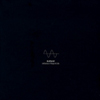 The intimidating and unnerving tones that open Reference Frequenciesbelie what follows them. The NASCAR-like buzz that rules over the firstsong inspires images of unholy insects parading over the landscape insome version of the end of the world. Their tirade empties rivers andleaves only dust and the beating of their wings topples buildings insudden crashes played out repeatedly in slow motion. This terror lastsonly moments when, suddenly, a quiet and inquiring voice (poet MattBurt) recites a series of descriptive lines intercepted, here andthere, by mnemonic recitations from philosophy, history, and personalexperience. Burt's voice is the sole instrument of this track besidessome very quiet background noise presumably constructed by Sten. Thisminimalism works suprisingly well; the timbre of Burt's voice isrelaxing and his stories, to some degree, inspire some kind ofvoyeuristic tendency in my character. I feel as though I'm watchingsomeone's nuances unfold quietly, slowly, and with some degree ofincompetence. "Recording the Jürg Mager Trio: La Luna" and "Recordingthe Jürg Mager Trio: A Shortcut to the Stars" unleash Deathprod's moreplayful side and capitalize on the unpredictability of this disc. Thesetwo songs, released as a 7" for Christmas in 1995, are not only comedicand fun to some degree, but they're both moody and atmospheric enoughto outline the scene of a hazy bar in a David Lynch film, populated byonly the strangest of his characters. The chugging rhythm of the organcarries a groove through the latter that proves to be especiallyhypnotic and leaves me swaying to and fro with its perpetual motion.The diversity on this disc is its greatest strength. All of the"Reference Frequencies" tracks were recorded in 1991 and each of theother tracks span the spectrum from 1995 to 2001. "Dora 3" closes theCD out and provides an excellent relief from the destruction of"Reference Frequencies #7, #8," and "#5." Violinist Ole Henrik Moestrains his instrument's voice out over the churning and boiling ofsome unknown substance. While the sound isn't as immediately physicalas the "Reference Frequencies" pieces, it isn't exactly an invitingcomposition, either. Sten has his mind set on something beyond thehuman eye. Whatever it is that lurks beyond his imagination reeks ofsinister plots and sickening panoramas.
The intimidating and unnerving tones that open Reference Frequenciesbelie what follows them. The NASCAR-like buzz that rules over the firstsong inspires images of unholy insects parading over the landscape insome version of the end of the world. Their tirade empties rivers andleaves only dust and the beating of their wings topples buildings insudden crashes played out repeatedly in slow motion. This terror lastsonly moments when, suddenly, a quiet and inquiring voice (poet MattBurt) recites a series of descriptive lines intercepted, here andthere, by mnemonic recitations from philosophy, history, and personalexperience. Burt's voice is the sole instrument of this track besidessome very quiet background noise presumably constructed by Sten. Thisminimalism works suprisingly well; the timbre of Burt's voice isrelaxing and his stories, to some degree, inspire some kind ofvoyeuristic tendency in my character. I feel as though I'm watchingsomeone's nuances unfold quietly, slowly, and with some degree ofincompetence. "Recording the Jürg Mager Trio: La Luna" and "Recordingthe Jürg Mager Trio: A Shortcut to the Stars" unleash Deathprod's moreplayful side and capitalize on the unpredictability of this disc. Thesetwo songs, released as a 7" for Christmas in 1995, are not only comedicand fun to some degree, but they're both moody and atmospheric enoughto outline the scene of a hazy bar in a David Lynch film, populated byonly the strangest of his characters. The chugging rhythm of the organcarries a groove through the latter that proves to be especiallyhypnotic and leaves me swaying to and fro with its perpetual motion.The diversity on this disc is its greatest strength. All of the"Reference Frequencies" tracks were recorded in 1991 and each of theother tracks span the spectrum from 1995 to 2001. "Dora 3" closes theCD out and provides an excellent relief from the destruction of"Reference Frequencies #7, #8," and "#5." Violinist Ole Henrik Moestrains his instrument's voice out over the churning and boiling ofsome unknown substance. While the sound isn't as immediately physicalas the "Reference Frequencies" pieces, it isn't exactly an invitingcomposition, either. Sten has his mind set on something beyond thehuman eye. Whatever it is that lurks beyond his imagination reeks ofsinister plots and sickening panoramas.
samples:
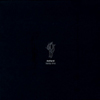 Sten's cinematic brush marks the whole of Treetop Drive and plays out as a more subtle and cohesive record than Reference Frequenciesdoes. Originally released in 1994 in an edition of 500, the album wassubsequently held back due to conflicts with the label. For beingreleased in 1994, this record sounds amazingly fresh. Composed of three"Treetop Drive" compositions and the closing "Towboat," the whole ofalbum is orchestral and unitary by nature. The first two tracks arecomposed of a series of string breaths, the first track letting themfloat about a whole sea of sounds; most of these knells are harmlessand secondary, only highlighting the bellowing of the strings. Thesecond composition combines strings with the roar and consumption ofdeep bass samples and static-filled echoes of feedback. The imaginarystory that the first two tracks tell is of slow degeneration, oftransformation and the sometimes invisible shift between dreams andnightmares. Again, Sten's knack for the hidden and terrible shinesthrough and reveals him to be good friends with the denizens of thenight. "Treetop Drive 3" and "Towboat" share more in common witheachother than the first two songs do, but both are linked to the firsthalf of the album by color and spirit. Where a rhythmic and dominantstring section had dominated the first two pieces, a stream of sounddominates the later two. There isn't a solo instrument or a particularsound that stands over and above anything on "Treetop Drive 3": only avocal sample about the experience of death that young individuals mighthave interrupts the sometimes electronic, sometimes brass, andsometimes ineffable flow of sound. The feeling is indeed funeralthroughout these nine gorgeous minutes; and therein the beauty ofSten's work becomes more evident. As horrific as Sten can be, hiscompositions bleed a certain familiarity that gives them the veneer ofcomfort. "Treetop Drive 3" feels like a lullaby at times and "Towboat"sews that deceptiveness into place. The final and longest piece beginswith a melody of graceful beauty and slowly distorts into a dreary walkalong a violent shore. Surely there is something in the ocean justwaiting for a foolish traveller to take a bad step. Or, perhaps, thereis a secret waiting out in that ocean and its contents are enough todrive any human insane. Whatever the case may be, the guitar-like moansand metallic churning that mark this song fit together perfectly andend Treetop Drive on a very high and memorable note.
Sten's cinematic brush marks the whole of Treetop Drive and plays out as a more subtle and cohesive record than Reference Frequenciesdoes. Originally released in 1994 in an edition of 500, the album wassubsequently held back due to conflicts with the label. For beingreleased in 1994, this record sounds amazingly fresh. Composed of three"Treetop Drive" compositions and the closing "Towboat," the whole ofalbum is orchestral and unitary by nature. The first two tracks arecomposed of a series of string breaths, the first track letting themfloat about a whole sea of sounds; most of these knells are harmlessand secondary, only highlighting the bellowing of the strings. Thesecond composition combines strings with the roar and consumption ofdeep bass samples and static-filled echoes of feedback. The imaginarystory that the first two tracks tell is of slow degeneration, oftransformation and the sometimes invisible shift between dreams andnightmares. Again, Sten's knack for the hidden and terrible shinesthrough and reveals him to be good friends with the denizens of thenight. "Treetop Drive 3" and "Towboat" share more in common witheachother than the first two songs do, but both are linked to the firsthalf of the album by color and spirit. Where a rhythmic and dominantstring section had dominated the first two pieces, a stream of sounddominates the later two. There isn't a solo instrument or a particularsound that stands over and above anything on "Treetop Drive 3": only avocal sample about the experience of death that young individuals mighthave interrupts the sometimes electronic, sometimes brass, andsometimes ineffable flow of sound. The feeling is indeed funeralthroughout these nine gorgeous minutes; and therein the beauty ofSten's work becomes more evident. As horrific as Sten can be, hiscompositions bleed a certain familiarity that gives them the veneer ofcomfort. "Treetop Drive 3" feels like a lullaby at times and "Towboat"sews that deceptiveness into place. The final and longest piece beginswith a melody of graceful beauty and slowly distorts into a dreary walkalong a violent shore. Surely there is something in the ocean justwaiting for a foolish traveller to take a bad step. Or, perhaps, thereis a secret waiting out in that ocean and its contents are enough todrive any human insane. Whatever the case may be, the guitar-like moansand metallic churning that mark this song fit together perfectly andend Treetop Drive on a very high and memorable note.
samples:
 Of the four discs, Imaginary Songs from Tristan da Cunhais perhaps the most unusual. Completely different from anything else inthis set, these tracks were composed in 1996 and began as part ofSten's graduation work at the Trondheim Art Academy. Tristan da Cunhais the most remote island in the world (located somewhere in the SouthAtlantic) and Sten drew the inspiration for this music from thatlocation. The first four tracks were recorded by Sten and violinist OleHenrik Moe and then transfered to wax cynlinders. These wax cylinderswere then recorded back to a digital format; the result is a recordingthat feels as though it could have come from the 1930s, when only somerich and influential people could've possibly reached the remoteparadise of the island. But these aren't the smooth sounds of affluentAmerica resounding through the speakers. There's an eerie glow comingoff the island and this is what Sten has managed to record. Perhapsthere are things best left alone on Tristan da Cunha or perhaps thereare secret rituals performed there by long forgotten peoples. Whateverthe case be, the first four songs do not depict a bright and exultantworld, but instead emphasize the mystery of remote places and theunknown. "The Contraceptive Briefcase II" plays out like an opera overthe abyss. Unearthly choirs of real voices, glass ringing, theremin,violin, and other assorted sounds resonate in any empty space and seemto tell the story of the return from the island. There is a screamhaunting each of the passenger's minds, something projected out of thepast and made manifest in the howling winds of the ocean and thecreaking of the old wooden ship. The song ends with the sound ofapplause, as though the whole thing were a performance meant to carryout the plans that had begun with "Burntwood." This applause slowlydeteriorates, however, into applause through the medium of the waxcylinders. Was the whole thing a play meant to tell the story of somefantastic island? Or is there a story here that is supposed to act as areal warning for would-be adventurers tempted by the fame and glorythat comes with uncovering the unknown and naming the nameless?
Of the four discs, Imaginary Songs from Tristan da Cunhais perhaps the most unusual. Completely different from anything else inthis set, these tracks were composed in 1996 and began as part ofSten's graduation work at the Trondheim Art Academy. Tristan da Cunhais the most remote island in the world (located somewhere in the SouthAtlantic) and Sten drew the inspiration for this music from thatlocation. The first four tracks were recorded by Sten and violinist OleHenrik Moe and then transfered to wax cynlinders. These wax cylinderswere then recorded back to a digital format; the result is a recordingthat feels as though it could have come from the 1930s, when only somerich and influential people could've possibly reached the remoteparadise of the island. But these aren't the smooth sounds of affluentAmerica resounding through the speakers. There's an eerie glow comingoff the island and this is what Sten has managed to record. Perhapsthere are things best left alone on Tristan da Cunha or perhaps thereare secret rituals performed there by long forgotten peoples. Whateverthe case be, the first four songs do not depict a bright and exultantworld, but instead emphasize the mystery of remote places and theunknown. "The Contraceptive Briefcase II" plays out like an opera overthe abyss. Unearthly choirs of real voices, glass ringing, theremin,violin, and other assorted sounds resonate in any empty space and seemto tell the story of the return from the island. There is a screamhaunting each of the passenger's minds, something projected out of thepast and made manifest in the howling winds of the ocean and thecreaking of the old wooden ship. The song ends with the sound ofapplause, as though the whole thing were a performance meant to carryout the plans that had begun with "Burntwood." This applause slowlydeteriorates, however, into applause through the medium of the waxcylinders. Was the whole thing a play meant to tell the story of somefantastic island? Or is there a story here that is supposed to act as areal warning for would-be adventurers tempted by the fame and glorythat comes with uncovering the unknown and naming the nameless?
samples:
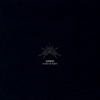 Recorded between 1994 and 2000, Morals and Dogmais Sten's newest Deathprod release and proves itself to be his mostemotional and enthralling work. Looking over the previous threerecords, it's obvious that Sten's greatest strength lies in his abilityto fill space in just the right way. He is a master of keeping openspaces the way they should be, of making paranoid and claustrophobicmoments as tight and discomforting as possible, and he never packs anymoment too tightly with busy sounds. His arrangements are perfectlyorganized without sounding as though they are overstructured. Everysong on this disc plays to the tune of that advantage. Morals and Dogmais a mostly quiet album, emphasizing the subtle powers Sten holds whenin control of silence and sound. Subterranean hums shake the ground andcause the slightest trembling in the foundations of reality and themists of Hans Magnus Ryan's violin obscure the hollowed stirrings ofthe outside world. "Dead People's Things" stands out as one of Sten'smost impressive pieces. Though I can't be sure, what I believe could bea theremin snakes its way through the chimerical world of stonebridges, cold air, and barren trees. There are silhouettes moving overthose bridges and through that air, dressed in top-hats, Victorianjackets, and high, black boots; their demeanor is not an approachableone. It's amazing to hear how only three or four simple elements canmake for compelling listening over eighteen and a half minutes ofmusic. If the boxset is simply too expensive, purchase this disc justto hear "Dead People's Things." The bleak tangibility that consumesthis record is gut-wrenchingly austere, but undeniably gorgeous. It'sas though Sten has made himself a cipher for the number 0 and returnedto reveal that it has content. "Orgone Donor" and "Cloudchamber" bothfollow in a similar fashion and both melt away slowly, filling the airwith the same smoke that will come to conceal the song's origins. Icome away from both feeling as though Sten has managed to bring backfield recordings from a completely different world, where death andsilence are revered ideas or forms and no longer suffocated under thedensity of the present. Sten's sound is unrestricted and unfettered,its heart an empty space where notions emerge for no other reason thanthat they must. Fittingly, even the heaviest of the songs here,"Cloudchamber," ends with a hush; a simple silk hum overcomes thebrutality of the sun's deadly rays and sinks the world in a cool oceanwhere all that's left to do is contemplate everything on the inside.
Recorded between 1994 and 2000, Morals and Dogmais Sten's newest Deathprod release and proves itself to be his mostemotional and enthralling work. Looking over the previous threerecords, it's obvious that Sten's greatest strength lies in his abilityto fill space in just the right way. He is a master of keeping openspaces the way they should be, of making paranoid and claustrophobicmoments as tight and discomforting as possible, and he never packs anymoment too tightly with busy sounds. His arrangements are perfectlyorganized without sounding as though they are overstructured. Everysong on this disc plays to the tune of that advantage. Morals and Dogmais a mostly quiet album, emphasizing the subtle powers Sten holds whenin control of silence and sound. Subterranean hums shake the ground andcause the slightest trembling in the foundations of reality and themists of Hans Magnus Ryan's violin obscure the hollowed stirrings ofthe outside world. "Dead People's Things" stands out as one of Sten'smost impressive pieces. Though I can't be sure, what I believe could bea theremin snakes its way through the chimerical world of stonebridges, cold air, and barren trees. There are silhouettes moving overthose bridges and through that air, dressed in top-hats, Victorianjackets, and high, black boots; their demeanor is not an approachableone. It's amazing to hear how only three or four simple elements canmake for compelling listening over eighteen and a half minutes ofmusic. If the boxset is simply too expensive, purchase this disc justto hear "Dead People's Things." The bleak tangibility that consumesthis record is gut-wrenchingly austere, but undeniably gorgeous. It'sas though Sten has made himself a cipher for the number 0 and returnedto reveal that it has content. "Orgone Donor" and "Cloudchamber" bothfollow in a similar fashion and both melt away slowly, filling the airwith the same smoke that will come to conceal the song's origins. Icome away from both feeling as though Sten has managed to bring backfield recordings from a completely different world, where death andsilence are revered ideas or forms and no longer suffocated under thedensity of the present. Sten's sound is unrestricted and unfettered,its heart an empty space where notions emerge for no other reason thanthat they must. Fittingly, even the heaviest of the songs here,"Cloudchamber," ends with a hush; a simple silk hum overcomes thebrutality of the sun's deadly rays and sinks the world in a cool oceanwhere all that's left to do is contemplate everything on the inside.
samples:
 The guy who told me about this EP described the vocals as being"sweet"; at first, I figured that meant that the singer either had adistractingly pretty voice or went the hack-pop-vocalist route andtried to affect one by warbling a lot. Thankfully, that's not the case,so when the heaviosity kicks in (all of 30 seconds into the firsttrack), there aren't any stinky reminders of bad goth rockers whothought that having a girl on the mic and bloodied angels on theiralbum covers would add layers of Biblical resonance. There's just asound somewhere between overdubbed soupy goodness and the hazy,late-night tranquility of a conversation with a good friend. The friendis thoughtful, and tempo changes abound: not in a chop-waggling way,but to let the conversation drift through slo-mo headbanging territory,ratchet into an even slower gear with just a glimpse of apprehensionpreceding the thud of each beat. It lurches into motion just longenough to get the blood pumping before the instruments fall away from aquiet, nodding vocal revelation. (There are lots of pauses for breathand reflection in this conversation.) Socially engaged where otherclever bands prefer to wallow in cotton-eared eclecticism, Jucifer alsosums up what's beautiful and good about the South on "My Stars,"stacking all of the badness that the Bush administration and its warbirds can muster against a simple, pretty plucked guitar melody and adignified story of innocence and ideals being chipped away by gradeschool, forty years of ugly politics, and a stubborn refusal to standfor anything. And then it ends, and forty-six minutes of crickets leaveyou to stew in your thoughts. This is what makes close friendshipsworth as much as they are. -
The guy who told me about this EP described the vocals as being"sweet"; at first, I figured that meant that the singer either had adistractingly pretty voice or went the hack-pop-vocalist route andtried to affect one by warbling a lot. Thankfully, that's not the case,so when the heaviosity kicks in (all of 30 seconds into the firsttrack), there aren't any stinky reminders of bad goth rockers whothought that having a girl on the mic and bloodied angels on theiralbum covers would add layers of Biblical resonance. There's just asound somewhere between overdubbed soupy goodness and the hazy,late-night tranquility of a conversation with a good friend. The friendis thoughtful, and tempo changes abound: not in a chop-waggling way,but to let the conversation drift through slo-mo headbanging territory,ratchet into an even slower gear with just a glimpse of apprehensionpreceding the thud of each beat. It lurches into motion just longenough to get the blood pumping before the instruments fall away from aquiet, nodding vocal revelation. (There are lots of pauses for breathand reflection in this conversation.) Socially engaged where otherclever bands prefer to wallow in cotton-eared eclecticism, Jucifer alsosums up what's beautiful and good about the South on "My Stars,"stacking all of the badness that the Bush administration and its warbirds can muster against a simple, pretty plucked guitar melody and adignified story of innocence and ideals being chipped away by gradeschool, forty years of ugly politics, and a stubborn refusal to standfor anything. And then it ends, and forty-six minutes of crickets leaveyou to stew in your thoughts. This is what makes close friendshipsworth as much as they are. - 


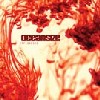 Oceansize have had some very lofty comparisons assigned to them intheir young careers, and their stunning debut full-length shows exactlywhy they're appropriate and warranted while still providing for a veryoriginal take on epic and destructive rock. Absorbing the album in itsentirety is not only recommended, it's somewhat required, as secondsinto it the sounds will prevent turning the music off or down. Theirsis a serpentine, tentacled organism, splattered with blood and full ofcolor, inviting while it can kill in an instant. It is an old but stillclever deception: lure with the quietest moment, then strike before thevictim has any idea what has happened or what the true nature or powerof the attack is. The three-guitar assault, the ethereal keyboardpassages, the tight tour-educated sound are perfect for this brand ofmurder, and Oceansize have studied their passion well. They are notvain, as they leave their grand largesse on full display, not cuttingor splicing the fat to make for a leaner listen. The first moments ofthe album reminded me of plenty of bands I have seen in small clubs,unaware of their appeal, desperate in their need to impress. Thedifference is that this band does, and when the quiet gives way for thebrutality, I was unafraid. Then the true space ride begins, and theassurances that have built up from a life of caring are decimated oneby one. "Nobody ever said they'd love you forever" and "one day allthis could be yours" are the dream and the realization of Tyler Durdenin separate verses: there is no success, there is no accomplishment,there is only the lasting disappointment. The trick is to make it soundinviting. Oceansize accomplish that and more. The roller coaster ridethey induce is to be marvelled over, that in this day and age ofworthless garbage being released day after day, there is a band that iscapable of absorbing influences and creating a music that can make theblood boil again. Where others have held that claim, and even had itquoted in songs on their record, it's been a long time since it bearedany weight. I submit that it can, and does, with this album.
Oceansize have had some very lofty comparisons assigned to them intheir young careers, and their stunning debut full-length shows exactlywhy they're appropriate and warranted while still providing for a veryoriginal take on epic and destructive rock. Absorbing the album in itsentirety is not only recommended, it's somewhat required, as secondsinto it the sounds will prevent turning the music off or down. Theirsis a serpentine, tentacled organism, splattered with blood and full ofcolor, inviting while it can kill in an instant. It is an old but stillclever deception: lure with the quietest moment, then strike before thevictim has any idea what has happened or what the true nature or powerof the attack is. The three-guitar assault, the ethereal keyboardpassages, the tight tour-educated sound are perfect for this brand ofmurder, and Oceansize have studied their passion well. They are notvain, as they leave their grand largesse on full display, not cuttingor splicing the fat to make for a leaner listen. The first moments ofthe album reminded me of plenty of bands I have seen in small clubs,unaware of their appeal, desperate in their need to impress. Thedifference is that this band does, and when the quiet gives way for thebrutality, I was unafraid. Then the true space ride begins, and theassurances that have built up from a life of caring are decimated oneby one. "Nobody ever said they'd love you forever" and "one day allthis could be yours" are the dream and the realization of Tyler Durdenin separate verses: there is no success, there is no accomplishment,there is only the lasting disappointment. The trick is to make it soundinviting. Oceansize accomplish that and more. The roller coaster ridethey induce is to be marvelled over, that in this day and age ofworthless garbage being released day after day, there is a band that iscapable of absorbing influences and creating a music that can make theblood boil again. Where others have held that claim, and even had itquoted in songs on their record, it's been a long time since it bearedany weight. I submit that it can, and does, with this album. 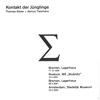 Asmus Tietchens and Thomas Köner exercise a collective marketing geniuswith their decision to end a fruitful collaborative series in brute,anticlimactic style, issuing this limited, (naturally) expensive boxmeant to house the duo's previous four discs. Such closure isespecially disappointing as it arrives just behind last year's n,Kontakt der Jünglinge's most dense and engrossing work to date, ahaunting deepspace symphony of icy gleam and relentless sprawl, one ofmy late-year favorites. For that disc the artists' very individualsensibilities seemed to work side-by-side with a precision bothbeautiful and terrible, for the potent, near-epic quality of thedislocation induced by the music. The fusion of n markedconsiderable progression from the past three discs which, whilecertainly worthwhile, never quite rose above their realities,essentially gallery-space improvs with pieces forming around anelaborate cut-and-paste of Köner's expansive drones, dark fieldcaptures, and Tietchens' industrial ambiance. Recorded live inAmsterdam in 2002, n left me with the hope that I need notshell out for another of Köner's indigestible double-disc drone opuses,or feel pressured into Die Stadt's 18-strong Tietchens reissuecampaign, the hope that I might be duly satisfied by the next Kontaktder Jünglinge disc, sure to be even better than the last. This hope isno more. If, in the very least, Frühruin is an attempt to makeup for the ascetic packaging of the first four discs, it fails.Offering little more than stiffer, glossier cardboard and differentdimensions, the box mirrors the information-less design of it intendedcontents, without a photo, a trace of supplemental artwork, or any kindof text statement from the typically silent musicians. The enclosed 3"disc likewise does little to justify such a costly shelving unit.Lacking any of n's new grandeur, the 15-min., two-track disc isa useless, uneventful, and embarrassingly short document that strugglesto rival the weaker moments of the duo's weaker releases. Forcompletists looking to consolidate the flimsy slipcases of the firstfour discs Frühruin might be an inevitability, but it is stilla shock that not even a full-length disc could have been included,especially given the prolific nature of both artists. If somehow I amwrong in assuming that this box marks the end of Köner's and Tietchens'collaboration, then it becomes an even more meaningless gesture.
Asmus Tietchens and Thomas Köner exercise a collective marketing geniuswith their decision to end a fruitful collaborative series in brute,anticlimactic style, issuing this limited, (naturally) expensive boxmeant to house the duo's previous four discs. Such closure isespecially disappointing as it arrives just behind last year's n,Kontakt der Jünglinge's most dense and engrossing work to date, ahaunting deepspace symphony of icy gleam and relentless sprawl, one ofmy late-year favorites. For that disc the artists' very individualsensibilities seemed to work side-by-side with a precision bothbeautiful and terrible, for the potent, near-epic quality of thedislocation induced by the music. The fusion of n markedconsiderable progression from the past three discs which, whilecertainly worthwhile, never quite rose above their realities,essentially gallery-space improvs with pieces forming around anelaborate cut-and-paste of Köner's expansive drones, dark fieldcaptures, and Tietchens' industrial ambiance. Recorded live inAmsterdam in 2002, n left me with the hope that I need notshell out for another of Köner's indigestible double-disc drone opuses,or feel pressured into Die Stadt's 18-strong Tietchens reissuecampaign, the hope that I might be duly satisfied by the next Kontaktder Jünglinge disc, sure to be even better than the last. This hope isno more. If, in the very least, Frühruin is an attempt to makeup for the ascetic packaging of the first four discs, it fails.Offering little more than stiffer, glossier cardboard and differentdimensions, the box mirrors the information-less design of it intendedcontents, without a photo, a trace of supplemental artwork, or any kindof text statement from the typically silent musicians. The enclosed 3"disc likewise does little to justify such a costly shelving unit.Lacking any of n's new grandeur, the 15-min., two-track disc isa useless, uneventful, and embarrassingly short document that strugglesto rival the weaker moments of the duo's weaker releases. Forcompletists looking to consolidate the flimsy slipcases of the firstfour discs Frühruin might be an inevitability, but it is stilla shock that not even a full-length disc could have been included,especially given the prolific nature of both artists. If somehow I amwrong in assuming that this box marks the end of Köner's and Tietchens'collaboration, then it becomes an even more meaningless gesture. 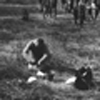 If anything is certain in the work of Rolf Julius, it's the music'spower to draw you in. This is not to say that the German sound artist'sapproach is guided by traditional associations of "intimacy" in music;his creations are too modest and open-ended for such classification.Julius' simple performance and installation pieces inflate and infusethe most basic relationships, between sound and its visual or spatialcorrespondents, with the markings of deep significance within the humanepistemological process. His works succeed by forcing us to recognizeour limits; they are self-awareness exercises, incredibly activeexperiences that give the illusion of supreme passivity. Over threedecades the artist has nudged Cage's "small sound" aesthetic away fromits delicate or ephemeral meanings towards a category of concentratedor elemental qualities, culminating with the definitive Small Musicseries. His early works present some of the more crude examples of thisdirection, less effective of course in their audio-only presentation,but well in tune with the spirit that would produce his more maturepieces. Julius' early sound components remain largely homogenousthroughout these eight works, dominated by a shrill, thereminic tonegenerator, sparse piano, and the occasional flute or plunked drum. Iget the feeling the artist invested much more time in theconceptualizing and constructing of his performance spaces than on themusic itself, which progresses on a near-improvised tack with only oneor two steady sounds in alternately tense and lazy oscillation.Imagined in their original environments, though, these pieces begin tocome alive in fascinating ways. Julius' own notes, included here,provide innocent and perfect introductions: "A number of loudspeakersplay the music for the frozen lake/I hope that the lake itself turnsinto music." (from "Concert for a Frozen Lake"). Pieces like "Music forthe Earth" and "Music for the Eyes" involve similarly straightforwardbut evocative constructions: "an old gravel path through which plantswere sprouting once more" is dotted with ten speakers, and "two smallloudspeakers with the music like spectacles on our open or closedeyes." It's easy to miss the profundity in the artist's words, but thenaïveté that claims images like a lake turning to music or the idea ofmusic itself becoming a looking-glass into the world, communicates alsothe great potential for revelation in such simple works. Julius' titles("Music for..", "Concert for..") reveal, in a humble and indirect way,the level of engagement demanded by each work. Given the artist'smethod for arranging his small sounds with an attempt to hide or fusethem with(in) a particular space, his titles could easily read "Music of..";however, the "for" guarantees recognition of the music's imposition,its artifice. Rather than dismantling the magic of the installation,such a realization becomes essential to Julius' message: that sound hasthe power to absolutely transform space, to reproduce it anew, as muchinside the head as outside. As we search the rocky ground, the lake'sedge, or the corners of a Berlin square, straining to uncover eachminiature source, we are as much drawn in and made aware of theenvironment as it is drawn out into us, filled in with every imaginedpossibility, itself invested with the drama of hearing, truly "musicfor the eyes."
If anything is certain in the work of Rolf Julius, it's the music'spower to draw you in. This is not to say that the German sound artist'sapproach is guided by traditional associations of "intimacy" in music;his creations are too modest and open-ended for such classification.Julius' simple performance and installation pieces inflate and infusethe most basic relationships, between sound and its visual or spatialcorrespondents, with the markings of deep significance within the humanepistemological process. His works succeed by forcing us to recognizeour limits; they are self-awareness exercises, incredibly activeexperiences that give the illusion of supreme passivity. Over threedecades the artist has nudged Cage's "small sound" aesthetic away fromits delicate or ephemeral meanings towards a category of concentratedor elemental qualities, culminating with the definitive Small Musicseries. His early works present some of the more crude examples of thisdirection, less effective of course in their audio-only presentation,but well in tune with the spirit that would produce his more maturepieces. Julius' early sound components remain largely homogenousthroughout these eight works, dominated by a shrill, thereminic tonegenerator, sparse piano, and the occasional flute or plunked drum. Iget the feeling the artist invested much more time in theconceptualizing and constructing of his performance spaces than on themusic itself, which progresses on a near-improvised tack with only oneor two steady sounds in alternately tense and lazy oscillation.Imagined in their original environments, though, these pieces begin tocome alive in fascinating ways. Julius' own notes, included here,provide innocent and perfect introductions: "A number of loudspeakersplay the music for the frozen lake/I hope that the lake itself turnsinto music." (from "Concert for a Frozen Lake"). Pieces like "Music forthe Earth" and "Music for the Eyes" involve similarly straightforwardbut evocative constructions: "an old gravel path through which plantswere sprouting once more" is dotted with ten speakers, and "two smallloudspeakers with the music like spectacles on our open or closedeyes." It's easy to miss the profundity in the artist's words, but thenaïveté that claims images like a lake turning to music or the idea ofmusic itself becoming a looking-glass into the world, communicates alsothe great potential for revelation in such simple works. Julius' titles("Music for..", "Concert for..") reveal, in a humble and indirect way,the level of engagement demanded by each work. Given the artist'smethod for arranging his small sounds with an attempt to hide or fusethem with(in) a particular space, his titles could easily read "Music of..";however, the "for" guarantees recognition of the music's imposition,its artifice. Rather than dismantling the magic of the installation,such a realization becomes essential to Julius' message: that sound hasthe power to absolutely transform space, to reproduce it anew, as muchinside the head as outside. As we search the rocky ground, the lake'sedge, or the corners of a Berlin square, straining to uncover eachminiature source, we are as much drawn in and made aware of theenvironment as it is drawn out into us, filled in with every imaginedpossibility, itself invested with the drama of hearing, truly "musicfor the eyes." The intimidating and unnerving tones that open Reference Frequenciesbelie what follows them. The NASCAR-like buzz that rules over the firstsong inspires images of unholy insects parading over the landscape insome version of the end of the world. Their tirade empties rivers andleaves only dust and the beating of their wings topples buildings insudden crashes played out repeatedly in slow motion. This terror lastsonly moments when, suddenly, a quiet and inquiring voice (poet MattBurt) recites a series of descriptive lines intercepted, here andthere, by mnemonic recitations from philosophy, history, and personalexperience. Burt's voice is the sole instrument of this track besidessome very quiet background noise presumably constructed by Sten. Thisminimalism works suprisingly well; the timbre of Burt's voice isrelaxing and his stories, to some degree, inspire some kind ofvoyeuristic tendency in my character. I feel as though I'm watchingsomeone's nuances unfold quietly, slowly, and with some degree ofincompetence. "Recording the Jürg Mager Trio: La Luna" and "Recordingthe Jürg Mager Trio: A Shortcut to the Stars" unleash Deathprod's moreplayful side and capitalize on the unpredictability of this disc. Thesetwo songs, released as a 7" for Christmas in 1995, are not only comedicand fun to some degree, but they're both moody and atmospheric enoughto outline the scene of a hazy bar in a David Lynch film, populated byonly the strangest of his characters. The chugging rhythm of the organcarries a groove through the latter that proves to be especiallyhypnotic and leaves me swaying to and fro with its perpetual motion.The diversity on this disc is its greatest strength. All of the"Reference Frequencies" tracks were recorded in 1991 and each of theother tracks span the spectrum from 1995 to 2001. "Dora 3" closes theCD out and provides an excellent relief from the destruction of"Reference Frequencies #7, #8," and "#5." Violinist Ole Henrik Moestrains his instrument's voice out over the churning and boiling ofsome unknown substance. While the sound isn't as immediately physicalas the "Reference Frequencies" pieces, it isn't exactly an invitingcomposition, either. Sten has his mind set on something beyond thehuman eye. Whatever it is that lurks beyond his imagination reeks ofsinister plots and sickening panoramas.
The intimidating and unnerving tones that open Reference Frequenciesbelie what follows them. The NASCAR-like buzz that rules over the firstsong inspires images of unholy insects parading over the landscape insome version of the end of the world. Their tirade empties rivers andleaves only dust and the beating of their wings topples buildings insudden crashes played out repeatedly in slow motion. This terror lastsonly moments when, suddenly, a quiet and inquiring voice (poet MattBurt) recites a series of descriptive lines intercepted, here andthere, by mnemonic recitations from philosophy, history, and personalexperience. Burt's voice is the sole instrument of this track besidessome very quiet background noise presumably constructed by Sten. Thisminimalism works suprisingly well; the timbre of Burt's voice isrelaxing and his stories, to some degree, inspire some kind ofvoyeuristic tendency in my character. I feel as though I'm watchingsomeone's nuances unfold quietly, slowly, and with some degree ofincompetence. "Recording the Jürg Mager Trio: La Luna" and "Recordingthe Jürg Mager Trio: A Shortcut to the Stars" unleash Deathprod's moreplayful side and capitalize on the unpredictability of this disc. Thesetwo songs, released as a 7" for Christmas in 1995, are not only comedicand fun to some degree, but they're both moody and atmospheric enoughto outline the scene of a hazy bar in a David Lynch film, populated byonly the strangest of his characters. The chugging rhythm of the organcarries a groove through the latter that proves to be especiallyhypnotic and leaves me swaying to and fro with its perpetual motion.The diversity on this disc is its greatest strength. All of the"Reference Frequencies" tracks were recorded in 1991 and each of theother tracks span the spectrum from 1995 to 2001. "Dora 3" closes theCD out and provides an excellent relief from the destruction of"Reference Frequencies #7, #8," and "#5." Violinist Ole Henrik Moestrains his instrument's voice out over the churning and boiling ofsome unknown substance. While the sound isn't as immediately physicalas the "Reference Frequencies" pieces, it isn't exactly an invitingcomposition, either. Sten has his mind set on something beyond thehuman eye. Whatever it is that lurks beyond his imagination reeks ofsinister plots and sickening panoramas. Sten's cinematic brush marks the whole of Treetop Drive and plays out as a more subtle and cohesive record than Reference Frequenciesdoes. Originally released in 1994 in an edition of 500, the album wassubsequently held back due to conflicts with the label. For beingreleased in 1994, this record sounds amazingly fresh. Composed of three"Treetop Drive" compositions and the closing "Towboat," the whole ofalbum is orchestral and unitary by nature. The first two tracks arecomposed of a series of string breaths, the first track letting themfloat about a whole sea of sounds; most of these knells are harmlessand secondary, only highlighting the bellowing of the strings. Thesecond composition combines strings with the roar and consumption ofdeep bass samples and static-filled echoes of feedback. The imaginarystory that the first two tracks tell is of slow degeneration, oftransformation and the sometimes invisible shift between dreams andnightmares. Again, Sten's knack for the hidden and terrible shinesthrough and reveals him to be good friends with the denizens of thenight. "Treetop Drive 3" and "Towboat" share more in common witheachother than the first two songs do, but both are linked to the firsthalf of the album by color and spirit. Where a rhythmic and dominantstring section had dominated the first two pieces, a stream of sounddominates the later two. There isn't a solo instrument or a particularsound that stands over and above anything on "Treetop Drive 3": only avocal sample about the experience of death that young individuals mighthave interrupts the sometimes electronic, sometimes brass, andsometimes ineffable flow of sound. The feeling is indeed funeralthroughout these nine gorgeous minutes; and therein the beauty ofSten's work becomes more evident. As horrific as Sten can be, hiscompositions bleed a certain familiarity that gives them the veneer ofcomfort. "Treetop Drive 3" feels like a lullaby at times and "Towboat"sews that deceptiveness into place. The final and longest piece beginswith a melody of graceful beauty and slowly distorts into a dreary walkalong a violent shore. Surely there is something in the ocean justwaiting for a foolish traveller to take a bad step. Or, perhaps, thereis a secret waiting out in that ocean and its contents are enough todrive any human insane. Whatever the case may be, the guitar-like moansand metallic churning that mark this song fit together perfectly andend Treetop Drive on a very high and memorable note.
Sten's cinematic brush marks the whole of Treetop Drive and plays out as a more subtle and cohesive record than Reference Frequenciesdoes. Originally released in 1994 in an edition of 500, the album wassubsequently held back due to conflicts with the label. For beingreleased in 1994, this record sounds amazingly fresh. Composed of three"Treetop Drive" compositions and the closing "Towboat," the whole ofalbum is orchestral and unitary by nature. The first two tracks arecomposed of a series of string breaths, the first track letting themfloat about a whole sea of sounds; most of these knells are harmlessand secondary, only highlighting the bellowing of the strings. Thesecond composition combines strings with the roar and consumption ofdeep bass samples and static-filled echoes of feedback. The imaginarystory that the first two tracks tell is of slow degeneration, oftransformation and the sometimes invisible shift between dreams andnightmares. Again, Sten's knack for the hidden and terrible shinesthrough and reveals him to be good friends with the denizens of thenight. "Treetop Drive 3" and "Towboat" share more in common witheachother than the first two songs do, but both are linked to the firsthalf of the album by color and spirit. Where a rhythmic and dominantstring section had dominated the first two pieces, a stream of sounddominates the later two. There isn't a solo instrument or a particularsound that stands over and above anything on "Treetop Drive 3": only avocal sample about the experience of death that young individuals mighthave interrupts the sometimes electronic, sometimes brass, andsometimes ineffable flow of sound. The feeling is indeed funeralthroughout these nine gorgeous minutes; and therein the beauty ofSten's work becomes more evident. As horrific as Sten can be, hiscompositions bleed a certain familiarity that gives them the veneer ofcomfort. "Treetop Drive 3" feels like a lullaby at times and "Towboat"sews that deceptiveness into place. The final and longest piece beginswith a melody of graceful beauty and slowly distorts into a dreary walkalong a violent shore. Surely there is something in the ocean justwaiting for a foolish traveller to take a bad step. Or, perhaps, thereis a secret waiting out in that ocean and its contents are enough todrive any human insane. Whatever the case may be, the guitar-like moansand metallic churning that mark this song fit together perfectly andend Treetop Drive on a very high and memorable note. Of the four discs, Imaginary Songs from Tristan da Cunhais perhaps the most unusual. Completely different from anything else inthis set, these tracks were composed in 1996 and began as part ofSten's graduation work at the Trondheim Art Academy. Tristan da Cunhais the most remote island in the world (located somewhere in the SouthAtlantic) and Sten drew the inspiration for this music from thatlocation. The first four tracks were recorded by Sten and violinist OleHenrik Moe and then transfered to wax cynlinders. These wax cylinderswere then recorded back to a digital format; the result is a recordingthat feels as though it could have come from the 1930s, when only somerich and influential people could've possibly reached the remoteparadise of the island. But these aren't the smooth sounds of affluentAmerica resounding through the speakers. There's an eerie glow comingoff the island and this is what Sten has managed to record. Perhapsthere are things best left alone on Tristan da Cunha or perhaps thereare secret rituals performed there by long forgotten peoples. Whateverthe case be, the first four songs do not depict a bright and exultantworld, but instead emphasize the mystery of remote places and theunknown. "The Contraceptive Briefcase II" plays out like an opera overthe abyss. Unearthly choirs of real voices, glass ringing, theremin,violin, and other assorted sounds resonate in any empty space and seemto tell the story of the return from the island. There is a screamhaunting each of the passenger's minds, something projected out of thepast and made manifest in the howling winds of the ocean and thecreaking of the old wooden ship. The song ends with the sound ofapplause, as though the whole thing were a performance meant to carryout the plans that had begun with "Burntwood." This applause slowlydeteriorates, however, into applause through the medium of the waxcylinders. Was the whole thing a play meant to tell the story of somefantastic island? Or is there a story here that is supposed to act as areal warning for would-be adventurers tempted by the fame and glorythat comes with uncovering the unknown and naming the nameless?
Of the four discs, Imaginary Songs from Tristan da Cunhais perhaps the most unusual. Completely different from anything else inthis set, these tracks were composed in 1996 and began as part ofSten's graduation work at the Trondheim Art Academy. Tristan da Cunhais the most remote island in the world (located somewhere in the SouthAtlantic) and Sten drew the inspiration for this music from thatlocation. The first four tracks were recorded by Sten and violinist OleHenrik Moe and then transfered to wax cynlinders. These wax cylinderswere then recorded back to a digital format; the result is a recordingthat feels as though it could have come from the 1930s, when only somerich and influential people could've possibly reached the remoteparadise of the island. But these aren't the smooth sounds of affluentAmerica resounding through the speakers. There's an eerie glow comingoff the island and this is what Sten has managed to record. Perhapsthere are things best left alone on Tristan da Cunha or perhaps thereare secret rituals performed there by long forgotten peoples. Whateverthe case be, the first four songs do not depict a bright and exultantworld, but instead emphasize the mystery of remote places and theunknown. "The Contraceptive Briefcase II" plays out like an opera overthe abyss. Unearthly choirs of real voices, glass ringing, theremin,violin, and other assorted sounds resonate in any empty space and seemto tell the story of the return from the island. There is a screamhaunting each of the passenger's minds, something projected out of thepast and made manifest in the howling winds of the ocean and thecreaking of the old wooden ship. The song ends with the sound ofapplause, as though the whole thing were a performance meant to carryout the plans that had begun with "Burntwood." This applause slowlydeteriorates, however, into applause through the medium of the waxcylinders. Was the whole thing a play meant to tell the story of somefantastic island? Or is there a story here that is supposed to act as areal warning for would-be adventurers tempted by the fame and glorythat comes with uncovering the unknown and naming the nameless? Recorded between 1994 and 2000, Morals and Dogmais Sten's newest Deathprod release and proves itself to be his mostemotional and enthralling work. Looking over the previous threerecords, it's obvious that Sten's greatest strength lies in his abilityto fill space in just the right way. He is a master of keeping openspaces the way they should be, of making paranoid and claustrophobicmoments as tight and discomforting as possible, and he never packs anymoment too tightly with busy sounds. His arrangements are perfectlyorganized without sounding as though they are overstructured. Everysong on this disc plays to the tune of that advantage. Morals and Dogmais a mostly quiet album, emphasizing the subtle powers Sten holds whenin control of silence and sound. Subterranean hums shake the ground andcause the slightest trembling in the foundations of reality and themists of Hans Magnus Ryan's violin obscure the hollowed stirrings ofthe outside world. "Dead People's Things" stands out as one of Sten'smost impressive pieces. Though I can't be sure, what I believe could bea theremin snakes its way through the chimerical world of stonebridges, cold air, and barren trees. There are silhouettes moving overthose bridges and through that air, dressed in top-hats, Victorianjackets, and high, black boots; their demeanor is not an approachableone. It's amazing to hear how only three or four simple elements canmake for compelling listening over eighteen and a half minutes ofmusic. If the boxset is simply too expensive, purchase this disc justto hear "Dead People's Things." The bleak tangibility that consumesthis record is gut-wrenchingly austere, but undeniably gorgeous. It'sas though Sten has made himself a cipher for the number 0 and returnedto reveal that it has content. "Orgone Donor" and "Cloudchamber" bothfollow in a similar fashion and both melt away slowly, filling the airwith the same smoke that will come to conceal the song's origins. Icome away from both feeling as though Sten has managed to bring backfield recordings from a completely different world, where death andsilence are revered ideas or forms and no longer suffocated under thedensity of the present. Sten's sound is unrestricted and unfettered,its heart an empty space where notions emerge for no other reason thanthat they must. Fittingly, even the heaviest of the songs here,"Cloudchamber," ends with a hush; a simple silk hum overcomes thebrutality of the sun's deadly rays and sinks the world in a cool oceanwhere all that's left to do is contemplate everything on the inside.
Recorded between 1994 and 2000, Morals and Dogmais Sten's newest Deathprod release and proves itself to be his mostemotional and enthralling work. Looking over the previous threerecords, it's obvious that Sten's greatest strength lies in his abilityto fill space in just the right way. He is a master of keeping openspaces the way they should be, of making paranoid and claustrophobicmoments as tight and discomforting as possible, and he never packs anymoment too tightly with busy sounds. His arrangements are perfectlyorganized without sounding as though they are overstructured. Everysong on this disc plays to the tune of that advantage. Morals and Dogmais a mostly quiet album, emphasizing the subtle powers Sten holds whenin control of silence and sound. Subterranean hums shake the ground andcause the slightest trembling in the foundations of reality and themists of Hans Magnus Ryan's violin obscure the hollowed stirrings ofthe outside world. "Dead People's Things" stands out as one of Sten'smost impressive pieces. Though I can't be sure, what I believe could bea theremin snakes its way through the chimerical world of stonebridges, cold air, and barren trees. There are silhouettes moving overthose bridges and through that air, dressed in top-hats, Victorianjackets, and high, black boots; their demeanor is not an approachableone. It's amazing to hear how only three or four simple elements canmake for compelling listening over eighteen and a half minutes ofmusic. If the boxset is simply too expensive, purchase this disc justto hear "Dead People's Things." The bleak tangibility that consumesthis record is gut-wrenchingly austere, but undeniably gorgeous. It'sas though Sten has made himself a cipher for the number 0 and returnedto reveal that it has content. "Orgone Donor" and "Cloudchamber" bothfollow in a similar fashion and both melt away slowly, filling the airwith the same smoke that will come to conceal the song's origins. Icome away from both feeling as though Sten has managed to bring backfield recordings from a completely different world, where death andsilence are revered ideas or forms and no longer suffocated under thedensity of the present. Sten's sound is unrestricted and unfettered,its heart an empty space where notions emerge for no other reason thanthat they must. Fittingly, even the heaviest of the songs here,"Cloudchamber," ends with a hush; a simple silk hum overcomes thebrutality of the sun's deadly rays and sinks the world in a cool oceanwhere all that's left to do is contemplate everything on the inside. There's something intensely satisfying about an artist who alwaysdelivers the expected with a high level of quality. It's like having afavorite meal and a favorite restaurant and knowing that every time yougo, the experience will be slightly different, you will bring your own,different perspective each time, but there will always be somethingcomfortable and familiar. By now, Meat Beat Manifesto are finepurveyors of musical comfort food. There are no brash surprises orabout faces on In Dub, which is part dub/remix record based on RUOKand part experiment with bong hit delays and rubbery bass. The elementsof a classic Meat Beat record are all here, from the meticulouslyconstructed beats to the rolling basslines to the spacious ambiencethat creates a space so unique that even the moments without beats aresignature Meat Beat moments. For crate-diggers, sample jockeys andother boys and girls with samplers trying to unearth the wittiest,weirdest bits of sound ever to be recontexturalized into booty-movingtunes, Jack Dangers has once again beat everyone to the punch. Theextended sample of an engineer explaining a missle guidance systemhands down eclipses my previous favorite samples that are all,appropriately enough, from other Meat Beat records. While In Dubtakes a more particular look at the Meat Beat sound through the dubmicroscope, there's always been a hefty dose of expected rattling highhats and percussion ringing out into space so this doesn't soundsignificantly different than most other Meat Beat records. It has amore narrow scope than albums like Subliminal Sandwich and Actual Sounds and Voices, but it nails just about every track in a that has come to be expected. The real revelation with In Dubcomes with the 5.1 surround sound mix found on the DVD. I've alwaysbeen amazed at the deft placement of sounds in Meat Beat Manifestomixes, and with the extra channels of sound, the whole affair becomesan opportunity for Dangers to show off. There is no one better atsculpting sound into an immersive, breathing, pulsing atmosphere whilemaintaing head nodding rhythms and a sense of humor than Jack Dangers,and In Dub demonstrates that. For those hoping that the DVD edition of In Dubwill contain full-on videos for the album's tracks, I would stress thatthe visual accompaniment provided by Ben Stokes is more along the linesof highly stylized visualizations than music videos proper. Some tracksfeature pulsing graphics not unlike a quirky WinAmp viz, while othershave a slightly more developed video presentation, but all in all thevisual side of the DVD is more of a special feature than a mainattraction. The reason to get the DVD is the 5.1 mix, something thatwill become more and more common, but may not be done much better thanit is here. In Dub won't likely change anyone's perception ofwhat Meat Beat Manifesto is at this point, but it's a welcome newrelease from an old standard that continues to refine, innovate, andsatisfy.
There's something intensely satisfying about an artist who alwaysdelivers the expected with a high level of quality. It's like having afavorite meal and a favorite restaurant and knowing that every time yougo, the experience will be slightly different, you will bring your own,different perspective each time, but there will always be somethingcomfortable and familiar. By now, Meat Beat Manifesto are finepurveyors of musical comfort food. There are no brash surprises orabout faces on In Dub, which is part dub/remix record based on RUOKand part experiment with bong hit delays and rubbery bass. The elementsof a classic Meat Beat record are all here, from the meticulouslyconstructed beats to the rolling basslines to the spacious ambiencethat creates a space so unique that even the moments without beats aresignature Meat Beat moments. For crate-diggers, sample jockeys andother boys and girls with samplers trying to unearth the wittiest,weirdest bits of sound ever to be recontexturalized into booty-movingtunes, Jack Dangers has once again beat everyone to the punch. Theextended sample of an engineer explaining a missle guidance systemhands down eclipses my previous favorite samples that are all,appropriately enough, from other Meat Beat records. While In Dubtakes a more particular look at the Meat Beat sound through the dubmicroscope, there's always been a hefty dose of expected rattling highhats and percussion ringing out into space so this doesn't soundsignificantly different than most other Meat Beat records. It has amore narrow scope than albums like Subliminal Sandwich and Actual Sounds and Voices, but it nails just about every track in a that has come to be expected. The real revelation with In Dubcomes with the 5.1 surround sound mix found on the DVD. I've alwaysbeen amazed at the deft placement of sounds in Meat Beat Manifestomixes, and with the extra channels of sound, the whole affair becomesan opportunity for Dangers to show off. There is no one better atsculpting sound into an immersive, breathing, pulsing atmosphere whilemaintaing head nodding rhythms and a sense of humor than Jack Dangers,and In Dub demonstrates that. For those hoping that the DVD edition of In Dubwill contain full-on videos for the album's tracks, I would stress thatthe visual accompaniment provided by Ben Stokes is more along the linesof highly stylized visualizations than music videos proper. Some tracksfeature pulsing graphics not unlike a quirky WinAmp viz, while othershave a slightly more developed video presentation, but all in all thevisual side of the DVD is more of a special feature than a mainattraction. The reason to get the DVD is the 5.1 mix, something thatwill become more and more common, but may not be done much better thanit is here. In Dub won't likely change anyone's perception ofwhat Meat Beat Manifesto is at this point, but it's a welcome newrelease from an old standard that continues to refine, innovate, andsatisfy.  This is the first single off Liars supposedly unlistenable, actually compelling and certainly image shattering second album They Were Wrong, So We Drowned.On that album, the song is a dread filled centerpiece, pinning thethemes down and providing a solid basis around which the more divergentpieces can revolve. As a single, the song does not have the benefit ofbeing the pressure valve on the tension and strength built up by theother tracks. This, however, can be a good thing. Out of the context ofthe album, "Fenced" stands on its own and reveals the subtleties thatsomehow make it even more creepy. The sounds that simmer in thebackground and sound like the sharp conversations of a coven justdrifting through the trees are interlaced with the high falsettochanting or pleading, a mesmerized voice. The fright is so subdued atthis point that the sudden stabs of "We're Doomed!" come as a shock,and bringing the affecting nature of the song to a new place. Theircover of the Germs' "Sex Boy" breathlessly pounds itself to death, witha remarkable disregard for dramatic tension and audio fidelity. As alive track, the latter is excusable, and not really a major issue. Whatis really missing is the endearing and compelling side of Liars' brattyart-damaged live performances. The track blazes bright, with a noisyassault that was probably quite captivating in the live setting, butmight embarrass the hooting audience punctuating the song were they tohear the recording of the show. "The Fountain and Its Monologue" is thepatient, brooding cousin of "Fenced," or perhaps the forethought thatwould lead to the creepy sentiments expressed in that song, thepregnant pause before a torrent of fright. It slithers along with acurious drone, never leaping out at you, making no distinct impressionsbut sinking further and further into the oblivion. With these songs arethree corresponding videos. For "Fenced," the three Liars engage inbloody snow play interspersed with some gaudy fractal visualizationspractically straight from your WinAmp window. "Sex Boy" tries and failsto repeat the pastiche brilliance of the "There's Always Room on theBroom" video, and the "Fountain" video is not unlike the song:momentarily interesting but ultimately unimpressive. For a single, it'squite generous in the perks, even if not so in the content. "We FencedOther Gardens With The Bones of Their Own" is still an accomplishmentin any format, capturing the essence of Liars spooky new sound.
This is the first single off Liars supposedly unlistenable, actually compelling and certainly image shattering second album They Were Wrong, So We Drowned.On that album, the song is a dread filled centerpiece, pinning thethemes down and providing a solid basis around which the more divergentpieces can revolve. As a single, the song does not have the benefit ofbeing the pressure valve on the tension and strength built up by theother tracks. This, however, can be a good thing. Out of the context ofthe album, "Fenced" stands on its own and reveals the subtleties thatsomehow make it even more creepy. The sounds that simmer in thebackground and sound like the sharp conversations of a coven justdrifting through the trees are interlaced with the high falsettochanting or pleading, a mesmerized voice. The fright is so subdued atthis point that the sudden stabs of "We're Doomed!" come as a shock,and bringing the affecting nature of the song to a new place. Theircover of the Germs' "Sex Boy" breathlessly pounds itself to death, witha remarkable disregard for dramatic tension and audio fidelity. As alive track, the latter is excusable, and not really a major issue. Whatis really missing is the endearing and compelling side of Liars' brattyart-damaged live performances. The track blazes bright, with a noisyassault that was probably quite captivating in the live setting, butmight embarrass the hooting audience punctuating the song were they tohear the recording of the show. "The Fountain and Its Monologue" is thepatient, brooding cousin of "Fenced," or perhaps the forethought thatwould lead to the creepy sentiments expressed in that song, thepregnant pause before a torrent of fright. It slithers along with acurious drone, never leaping out at you, making no distinct impressionsbut sinking further and further into the oblivion. With these songs arethree corresponding videos. For "Fenced," the three Liars engage inbloody snow play interspersed with some gaudy fractal visualizationspractically straight from your WinAmp window. "Sex Boy" tries and failsto repeat the pastiche brilliance of the "There's Always Room on theBroom" video, and the "Fountain" video is not unlike the song:momentarily interesting but ultimately unimpressive. For a single, it'squite generous in the perks, even if not so in the content. "We FencedOther Gardens With The Bones of Their Own" is still an accomplishmentin any format, capturing the essence of Liars spooky new sound. 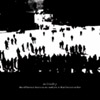 The energy of MClusky cannot be denied on their second full-length asthey blister their way trough another group of songs that will astoundand confound even the staunchest fan. It's been a while since"Lightsabre Cocksucking Blues" and the dancing Flash kittens, andMclusky want the world to know that even though founding member MatHarding parted ways with the band, the essence is still here and thepurpose is still to destroy. There's a conscious effort, it seems, tomake the songs a bit longer on this release, where previous releaseswere chock-full of two minute masterpieces; and the material hascertainly veered more to the Dark Side of the Force for the moment.Neither makes a negative impact on the music, however, and Steve Albiniagain manages to stay out of the way of this band and just capturetheir live essence without need for much studio trickery. That is stillthe best way to experience Mclusky, it seems, as their shows tend to beplain incendiary in nature, and with an arsenal like this, there's notelling how many would survive the barrage. The cackles and roostercalls on the opening track meld well with the distorted guitars andhard-hitting drums. Andy Falkous is just as cockney and clever, andeven though he's claiming "everwhere I look is a darkness," he soundslike he hasn't had this much fun in years. He screams his lungs out,double-tracking everywhere and writing half-cliché and half brilliancein his lyrics ("Note to invading aliens: avoid this town like this townavoided us" is a personal favorite). Mclusky have a great gift formelody, where even the trashiest or thrashiest songs are catchy as allhell, and I couldn't help nodding my head as accompaniment. Overall,they're just as sloppy, just as unpolished, and just as purely comicalas always. Quite frankly, I'm glad they wouldn't have it any other way,as Mclusky are a breath of fresh air.
The energy of MClusky cannot be denied on their second full-length asthey blister their way trough another group of songs that will astoundand confound even the staunchest fan. It's been a while since"Lightsabre Cocksucking Blues" and the dancing Flash kittens, andMclusky want the world to know that even though founding member MatHarding parted ways with the band, the essence is still here and thepurpose is still to destroy. There's a conscious effort, it seems, tomake the songs a bit longer on this release, where previous releaseswere chock-full of two minute masterpieces; and the material hascertainly veered more to the Dark Side of the Force for the moment.Neither makes a negative impact on the music, however, and Steve Albiniagain manages to stay out of the way of this band and just capturetheir live essence without need for much studio trickery. That is stillthe best way to experience Mclusky, it seems, as their shows tend to beplain incendiary in nature, and with an arsenal like this, there's notelling how many would survive the barrage. The cackles and roostercalls on the opening track meld well with the distorted guitars andhard-hitting drums. Andy Falkous is just as cockney and clever, andeven though he's claiming "everwhere I look is a darkness," he soundslike he hasn't had this much fun in years. He screams his lungs out,double-tracking everywhere and writing half-cliché and half brilliancein his lyrics ("Note to invading aliens: avoid this town like this townavoided us" is a personal favorite). Mclusky have a great gift formelody, where even the trashiest or thrashiest songs are catchy as allhell, and I couldn't help nodding my head as accompaniment. Overall,they're just as sloppy, just as unpolished, and just as purely comicalas always. Quite frankly, I'm glad they wouldn't have it any other way,as Mclusky are a breath of fresh air. 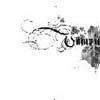 The one phrase Cliff's Notes line on Shadow Huntaz is simply: "Skamdoes hip-hop." While that's true on the surface, it might be a bitmisleading as the Shadow Huntaz' full-length on Skam is considerablymore straight-forward than I would have expected. Funckarma provide theproduction that is all funky electro hip-hop, heavy on the synths andsynthetic drums with a little bit of the signature Skam skitter, butnot as much tweaked beat-splicing as the idea of the project mightlead-on. The Vampire EPis more of the same, solid work from Shadow Huntaz, who combine cleverrhymes and interesting if not mindblowing beats in a way that is theirown. The title track, "Vampire" is a funky start/stop groove withstaccato rhymes bumping over acidy basslines. The analogy of rappers asvampires is only hinted at here, but it works. The remix of "Night,"from the Corrupt Data full length is an odd reworking thattakes some of the bombast out of the original, replacing it with echoesand a spooky, hollow ambience and tb303 bass that make it a completelydifferent track with old vocals. "Fasho" is the only misfire here--atrack that sounds like a b-side and sits uncomfortablly with itsuptempo, nearly drum n' bass tempo admist tracks of slow hip-hopnodding. "Don't got" rounds out the ep with a laundry list of thethings that the Shadow Huntaz "don't got" and it broadens the pallettea bit with chopped up samples of jazzy piano poking out in betweenbeats. While Corrupt Data includes more and often better tracks than this EP, Vampireadds to the breadth of the Shadow Huntaz formula that was starting tosound like a one-trick game by the end of the full length. This isliterate but not overly-intellectualized hip-hop that grooves andsurprises along the way.
The one phrase Cliff's Notes line on Shadow Huntaz is simply: "Skamdoes hip-hop." While that's true on the surface, it might be a bitmisleading as the Shadow Huntaz' full-length on Skam is considerablymore straight-forward than I would have expected. Funckarma provide theproduction that is all funky electro hip-hop, heavy on the synths andsynthetic drums with a little bit of the signature Skam skitter, butnot as much tweaked beat-splicing as the idea of the project mightlead-on. The Vampire EPis more of the same, solid work from Shadow Huntaz, who combine cleverrhymes and interesting if not mindblowing beats in a way that is theirown. The title track, "Vampire" is a funky start/stop groove withstaccato rhymes bumping over acidy basslines. The analogy of rappers asvampires is only hinted at here, but it works. The remix of "Night,"from the Corrupt Data full length is an odd reworking thattakes some of the bombast out of the original, replacing it with echoesand a spooky, hollow ambience and tb303 bass that make it a completelydifferent track with old vocals. "Fasho" is the only misfire here--atrack that sounds like a b-side and sits uncomfortablly with itsuptempo, nearly drum n' bass tempo admist tracks of slow hip-hopnodding. "Don't got" rounds out the ep with a laundry list of thethings that the Shadow Huntaz "don't got" and it broadens the pallettea bit with chopped up samples of jazzy piano poking out in betweenbeats. While Corrupt Data includes more and often better tracks than this EP, Vampireadds to the breadth of the Shadow Huntaz formula that was starting tosound like a one-trick game by the end of the full length. This isliterate but not overly-intellectualized hip-hop that grooves andsurprises along the way. 
